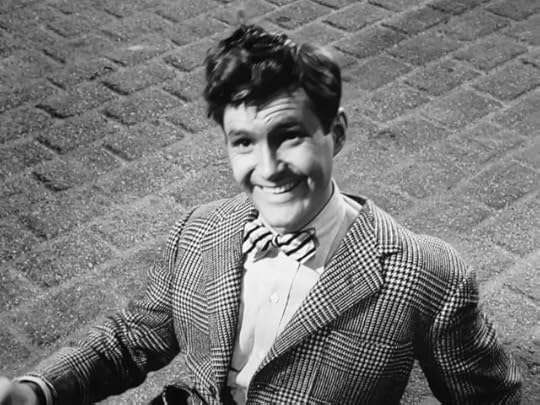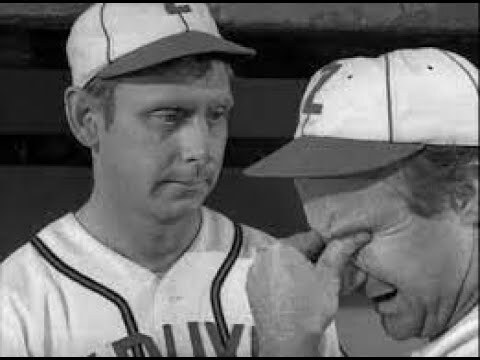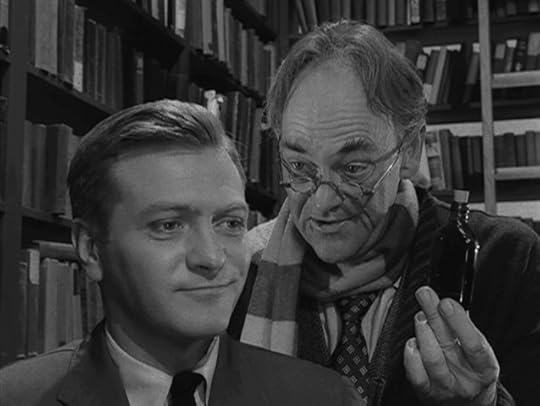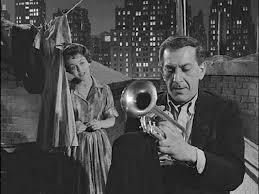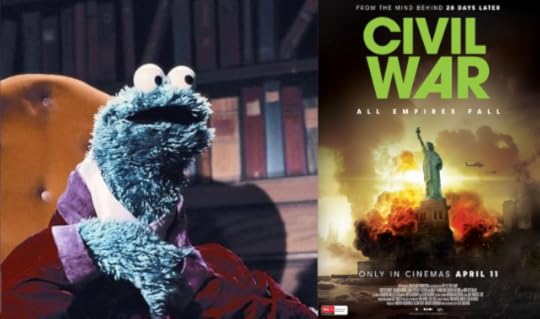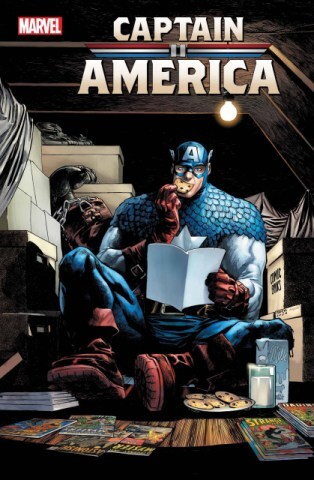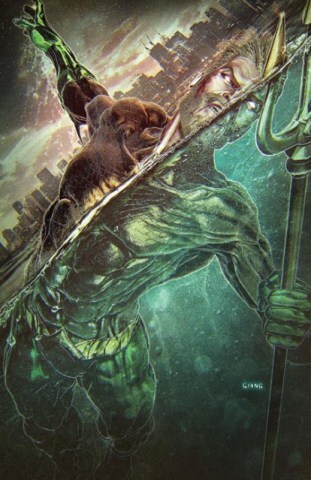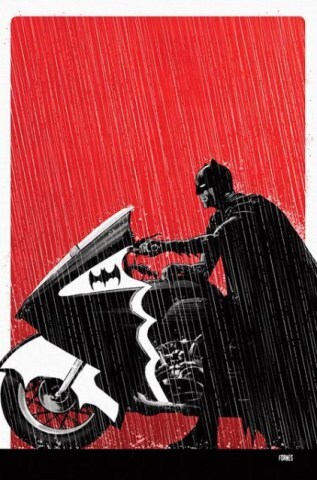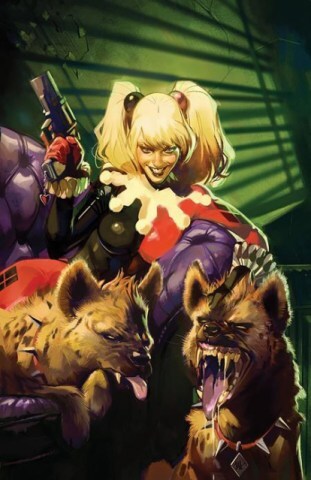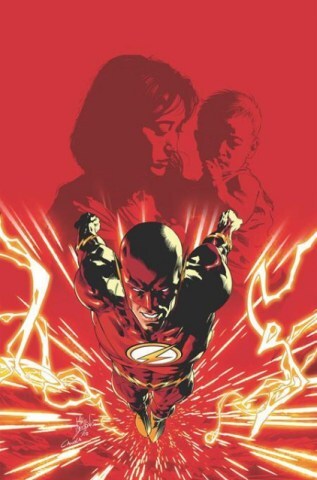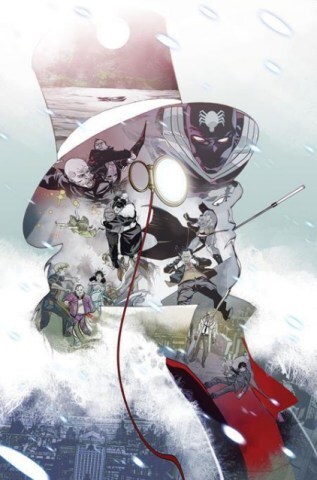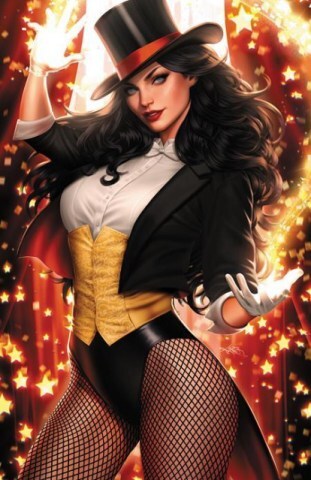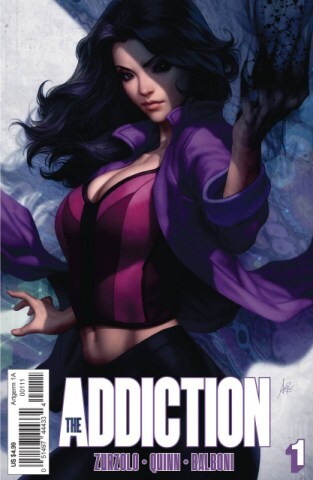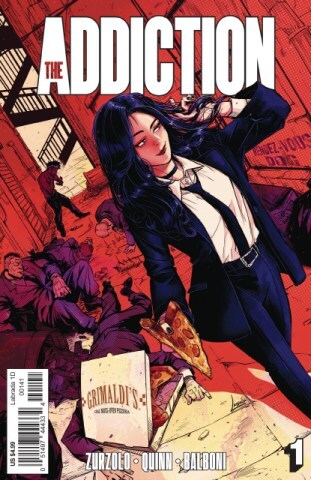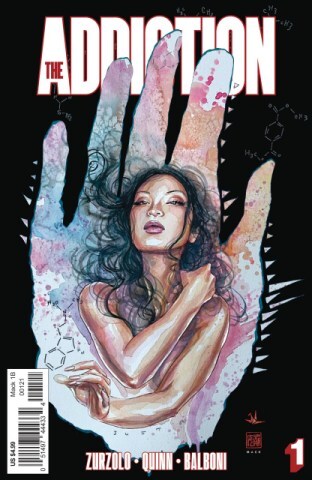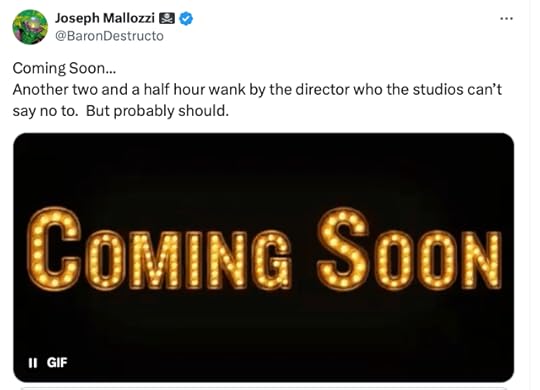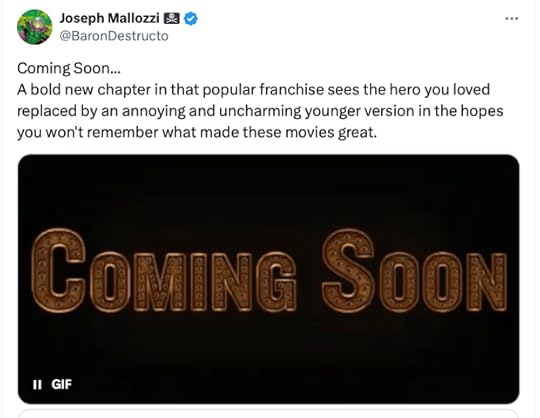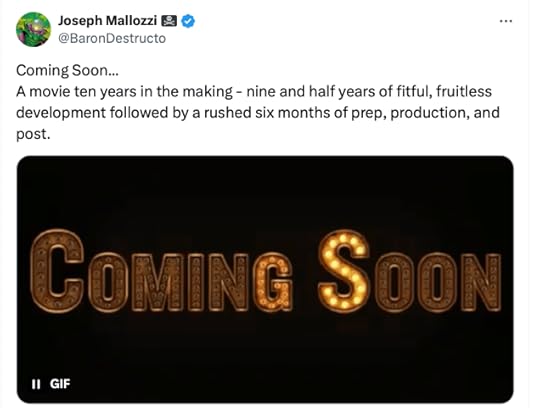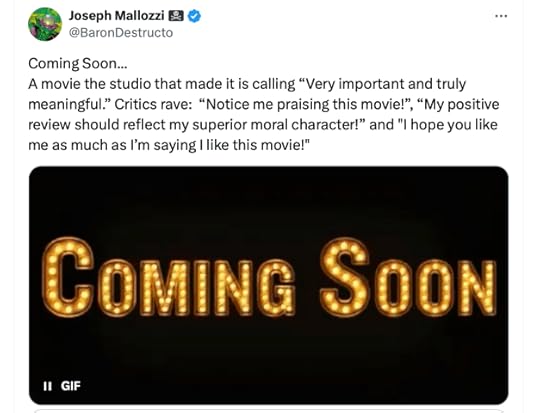Joseph Mallozzi's Blog, page 47
July 31, 2024
July 30, 2024: Montreal Day #4!
When I’m in Montreal, I feel like I’m in a whole other reality, dealing with a whole alternate set of tasks. As a result, I will sometimes forget myself. And this blog. Which was the case yesterday when, amidst all the action, I completely forgot to update. So here, early Wednesday morning, is your Tuesday update!
This visit has included a fair amount of unexpected hospital time. First, it was my cousin, Carolyn, who we went to visit after learning she had been admitted. Then, my mother who has suffered from years of debilitating migraines. In the case of the latter, mom had to spend the night in hospital undergoing tests and, after years of guess-work, doctors have finally occipital neuralgia.
In the interim, the migraine has abated and she’s much better and I’ve been doing some research. Apparently, certain execises may help. Anyone familiar with the condition?
Between hospital visits, I’m doing a little writing, a little reading (The Legacy of Heorot), and some zooming (mom’s backyard offers the perfect zoom backdrop). Also, caught up with my old high-school buddy Lawrence and his wife, Mel, last night over sushi. And cooked mom up that Australian wagyu I brought over from Toronto. It was a hit!
Your second regularly-scheuled blog entry coming your way later today.
If I remember!
Big fan of these cookies mom made with pure almond flour.
Finally, a coffee shop within walking distance of mom’s place (although, I suppose, it all depends on how far your willing to walk). La Station Cafe (they’re on Instagram) is located in a train station where my mother (and occasionally my sister and I when we were kids) would catch the train to go downtown every day for work and where my father would pick her up at the end of every day, after work. The layout is quaint and warm but the hours are short (closing at 2:30 p.m. on weekdays) presumably to take advantage of the rush hour crowds. They apparently make their own oat milk (which I aim to try the next time I visit). Their baked goods are homemade as well, but the cookies I tried tasted a little on the healthy side, so may go with the brownies next time. If you’re in Beaconsfild, check ’em out!
The Australian wagyu. I like mine a little less done – but mom prefers it a little more.
Finally, last night’s sushi outing. I forgot to take pics of Lawrence and Mel so here, enjoy this photo of the sushi cake.
The post July 30, 2024: Montreal Day #4! appeared first on Joseph Mallozzi's Weblog.
July 29, 2024
July 29, 2024: The Twilight Zone rewatch continues with the final episodes of season 1!
Episode 33, “Mr. Bevis”
This episode was first broadcast June 3, 1960.
This episode was originally conceived as a pilot for a new ongoing series. Serling generated a half dozen episode ideas, one of which ended up serving as the plot for season 2’s “The Whole Truth”.
The role of Bevis (originally Bemis) was offered to Burgess Meredith and, when he passed, the idea for the series was scrapped.
The stairway outside Bevis’s apartment was last glimpsed in “Nightmare Child”. When Bevis and his guardian angel are looking out at the office skyline, it’s the same view out the office window from “A Stop at Willoughby”.
The organ grinder and monkey who appear in this episode were originally contracted to appear in “Walking Distance”, but never made the cut.
Bevis’s car, the 1924 Rickenbacker was built by an automobile company established by WWI flying ace Eddie Rickenbacker. It went out of business in 1927. The cool new replacement sports car Bevis is offered is a 1958 Austin-Healey 100/6-seater.
This is one of four episodes to use the eerie eye instead of the spiral in the show’s opening sequence.
Orson Bean, who plays Mr. Bevis in this episode, was blacklisted by Hollywood in the 1950’s and so he found succcess on Broadway. He then turned his attention to television where he became a frequent guest on many quiz and talk shows. Later in his career, he would play Loren Bray in Dr. Quinn Medecine Woman. He was walking in Los Angeles when he was struck and killed in a two-car accident.
Henry Jones who played the part of Mr. Bevis’s guardian angel, J. Harry Hampstead, was actually considered for the part of Bevis. He enjoyed a long and varied career on Broadway, film, and television. He won a 1958 Tony Award for Best Supporting or Featured Actor for “Sunrise at Campobello”. Jones was a favorite of Alfred Hitchcock and one of his most recognizable performances was as the coroner in Vertigo (1958).
Charles Lane, who played the part of Bevis’s demanding boss, Mr. Peckinpaugh, started out as an insurance salesman before switching to acting – which turned out to be a very smart decision. He apparently appeared in so many films that, on occasion, he would watch one and recognize himself on screen having totally forgotten he’d had a role in the movie. Whereas Jones was a favorite of Hitchcock, Lane was a favorite of director Frank Capra who cast him in ten of his films. In fact, one of Lane’s most cherished possessions was a hand-written letter from Capra that read: “Well, Charlie, you’ve been my No. 1 crutch.” Lane occasionally guested opposite his good friend Lucille Ball, often as a thorn in her side. He played a similar role in Petticoat Junction (1963), his character Homer Bedloe forever scheming to shut down the Hooterville Cannonball. In 2005, Lane was honored at the TVLand Awards. He accepted the award at the age of 100 and, as part of his speech, informed the audience: “”In case anyone’s interested, I’m still available!” Horace McMahon who played the part of the bartender in this episode would go on to build a successful career playing cops on television.
William Schallert, who plays the ticketing officer at episode’s end, enjoyed a busy career in film and television as well. Genre fans may recognize him as Nilz Baris, the Federation Undersecretary of Agricultural Affairs, in Star Trek’s “The Trouble with Tribbles” (1967).
Finally, Victor Scotti who plays the animated Italian organ grinder in “Mr. Bevis” had a hugely successful career playing villains, comic reliefs, and a variety of ethnic characters. He was also said to be an excellent chef.
It’s interesting that this episode follows so closely on the heels of “A Passage for Trumpet” given their parallel themes of “Be happy with what you have” and their comparatively happy endings. This episode is criticized by some fans for being too silly, but I thought it a nice change of pace. I honestly don’t see how the premise could have sustained an entire series (as was the original plan) but thought it made for a perfectly fine episode of The Twilight Zone.
Episode 34, “The After Hours”
This episode was first broadcast June 10, 1960.
“The Afters Hours” possesses a lot of similarities to the 1951 short story “Evening Primrose” by John Collier about living mannequins in a parallel dimenson. This episode was remade 26 years later. The updated version leaned more into the suspense of the mystery and had Marsha resist giving up her humanity, not accepting her fate as readily as the Marsha in this episode.
Revered make-up artist William J. Tuttle created a face mask from actress Anne Francis that was used for the mannequin doppelganger in the episode’s final shot.
Anne Francis who played Marsha White in this episode got her start as a model, eventually debuting on Broadway at the age of 11. Even though she enjoyed a solid career in film and television, Francis (as well as many of her fans) were disappointed in the caliber of her roles, often supporting/sexy parts that under-utilized her incredible acting skills.
Elizabeth Allen who played the saleswoman (Betty Ellen) who sells Marsha the golden thimble also got her start as a model. She is best remembered as “The Away We Go” girl from The Jackie Gleason Show (1966) who introduced the show with that memorable catchphrase. In the 70’s, she and Charles Nelson Reilly made several appearances as a couple on Tattletales even though they weren’t married and Reilly was gay.
I remember being haunted by this episode when I was a kid and, decades later, I’m pleased to say it still holds up. Anne Francis is fantastic as the increasingly distressed Marsha and the episode does a nice job of building the mystery towards a satsifying and spooky climax. I thought it would have been nice to see Marsha resist her fate a little more, but it’s a small quibble. This episode neatly slides into my Season 1 Top 10 list, squeezing “A Nice Place to Visit” out from its #10 slot. Hope you’re all working on YOUR lists!
Episode 35, “The Mighty Casey”
This episode was first broadcast June 17, 1960.
“The Mighty Casey” was based on a play Rod Serling wrote prior to his creation of The Twilight Zone.
The episode title is a variation on “Casey at the Bat”, a poem written by Ernest Lawrence Thayerand in 1888.
The episode was originally shot with actor Paul Douglas in the role of baseball coach Mouth McGarry. Douglas had received a handwritten letter by Serling inviting him to guest on the series, and Douglas accepted. But Douglas was very ill during shooting and suffered a fatal heart attack two weeks after wrap. According to Serling: “We who were assocaiateed with him on the set know how hard he tried not to let his loss of health show up in the picture, but the prying, probing eye of the motion picture camera was too cruel. Heaven knows he turned in a performance that was outstanding for a a man in his physical condition. Only a fine actor could have done so well in such a state of health.” Serling requested permission from CBS to reshoot the episode. CBS refused, so Serling bore the costs of the reshoot. Again, according to Serling: “The tremendous exploitation and publicity possibliities of having Douglas ‘ final performance on the Twilight Zone were pointed out to us by members of our staff, but in the final analysis, it was decided to do the right thing that was right for Paul and remake the film.”
Actor Jack Warden, who previously appeared in season 1’s “The Lonely”, was brought in to take over the role. The decision was also made to replace original director Alvin Ganzer with Robert Parrish. No footage of the original version of the episode exists.
The ballpark scenes were filmed at Wrigley Field (in Los Angeles) after the Dodgers granted permission.
Among the players who welcome Casey back after his hospital visit is an uncredited Dom DeLuise.
Eagle-eyed viewers will note that, in the hospital scene, an oil can sits beside Casey’s bed.
Actor Robert Sorrellis who played Casey the robot in this episode, was a vegetarian who practicied yoga – and also a heavy drinker. On July 24, 2004, he walked into The Regency Lounge in Simi Valley and shot two customers, killing one. He was arrested and died in prison fifteen years later at the age of 88.
To be honest, I was kind of dreading this episode, and the early silly sound effects and kooky music initially confirmed my worst fears, but as it progressed – I have to admit – it kind of grew on me, and there were a few instances that had me laughing. Well, chuckling anyway. Overall, not top tier but, then again, not as bad as I was expecting, especially given the fact that this was the lowest rated episode of the show’s first season.
Episode 36, “A World of His Own”
This episode was first broadcast July 1, 1960.
Writer Richard Matheson’s first version of the script was much darker but Serling requested a more comedic rewrite. Matheson vehemently protested the change in tone but went ahead and honored Serling’s request. I can’t help but feel Serling made the wrong call here.
Matheson would later write a short story, “And Now I’m Waiting”, based on this episode for The Twilight Zone Magazine which would reflect that original darker tone.
Many stories, t.v. episodes and films seem to have drawn inspiration from this episode including Stephen King’s “Wod Processor of the Gods”.
Rod Serling kept wearing out his typewriters, so he ended up switching to a dictaphone like the one featured in this episode.
“A World of His Own” would mark Rod Serling’s first on-camera appearance in an episode. CBS liked it so much that Serling began making on-camera appearances starting in the show’s second season – but this was the sole episode in which he interacted with a character.
The living room set in which most of this episode takes place was last glimpsed in “A Stop at Willoughby”.
Keenan Wynn, who played the part of author Gregory West in this episode, was the son of actor/comedian Ed Wynn who appeared in season 1’s “One for the Angels”. Keenan Wynn enjoyed a busy onscreen career, mostly playing character parts and Disney movie villains. He would co-star with his father in Requiem for a Heavyweight (1956). In his later years, Wynn suffered from tinitus, the result of many years of racing – boats and cars alike.
Phyllis Kirk, who played the part of the perturbed wife, Victoria West, was a waitress and a perfume counter girl before eventually finding success, first as a model and then as an actress. She is probably best known as the fast-talking Nora Charles, partner to Peter Lawford’s Nick Charles in the television series The Thin Man (1957-1959). An outspoken activist and critic of capital punishment, her criticism of the death sentence given to Caryl Chessman, the “Red Light Bandit”, effectively ended her acting career.
Modoc the elephant went uncredited for his small but crucial scene.
The “funny ones” are my least favorite episodes, and this one follows in that tradition. It’s all a little too silly and over-the-top, although I really did like Serling’s surrpise cameo at episode’s end. Still, I can’t help but feel this was a blown opportunity and really wish we had gotten Matheson’s original dark version of this story.
With season 1 concluded, I would now love to see your ranking of the Top 10 Twilight Zone episodes so far. Here are mine:
10) The Lonely
9) Third from the Sun
8) And When the Sky Was Opened
7) Mirror Image
6) The After Hours
5) The Monsters Are Due on Maple Street
4) Walking Distance
3) Time Enough at Last
2) The Hitch-Hiker
1) A Stop at Willoughby
The post July 29, 2024: The Twilight Zone rewatch continues with the final episodes of season 1! appeared first on Joseph Mallozzi's Weblog.
July 28, 2024
July 28, 2024: Sharky Sunday!
In Montreal for the week. Missing my dog! Oh, and wife.
Sharky’s gummy bites…

Sampling freeze-dried broccoli…

Sampling a special french dessert – for dogs…

Undercover sheep…

Placing a secret order online…

The post July 28, 2024: Sharky Sunday! appeared first on Joseph Mallozzi's Weblog.
July 27, 2024
July 27, 2024: Montreal Day #1!
Look! It’s mom! Yep, I flew in to Montreal yesterday afternoon and I’m here for the week, spending quality time with mom over old episodes of Murder She Wrote, and waiting for my sister to return from her trip to the Maritimes so we can celebrate her birthday!
Mom is 91 and finally considering retirement.
Still finding time for her backyard plants.
Her boy, Caramel, who is looking a little chunky in his old age.
Sis’s boy, high-strung Ralphie, looking as svelte as ever, catching a snooze.
Mom enjoying her fourth cup of coffee of the day. I asked her if it kept her up at night but she scoffed, dismissing Canadian coffee as “mostly water”. It’s not like an Italian espresso.
Whenever I visit, I sleep in my old bedroom, on my old bed. It’s always a bit of a fitful night as the room smells like pee on account of Caramel having marked in there so many times it permeates the room despite endless cleanings. I’d open the door at night to air out the place but don’t for fear Caramel will come in and lay down a fresh coat of pee.
Mom hasn’t had much of an appetite of late and my sister has been trying to get her to eat more protein. To address this issue, I brought two gorgeous steaks over from Toronto: the French Limousin you see pictured above, and an Australian wagyu.
Today’s, I cooked up the former for lunch and she ended up eating almost a third.
Tomorrow, it’s the Australian wagyu!
The post July 27, 2024: Montreal Day #1! appeared first on Joseph Mallozzi's Weblog.
July 26, 2024
July 26, 2024: The Twilight Zone rewatch continues with episodes 29-32!
Episode 29, “Nightmare as a Child”
This episode was first broadcast April 29, 1960.
Director Richard L. Bare was originally slated to direct this episode but he was involved in a plane crash. He survived but was, nevertheless, unavailable so Alvin Ganzer directed the episode.
The character of Helen Foley was named after Rod Serling’s drama teacher at Binghamton Central High School.
Janice Rule, who plays Helen Foley in “Nightmare as a Child”, started out as a nightclub dancer at the age of 15. There years later, she made her Broadway debut. She loved theatre so much that she turned down the role of the female lead opposite Marlon Brando in On the Waterfront. That deemed “misbehavior” cost her her contract with Warner Bros. Unlike many actresses seeking stardom, she was very happy playing guest roles and actually preferred them over a series lead. According to Rule: “I think I’d go mad. I could never do the same character week after week with the same people. Your acting has to suffer. All you do is get one script a few days before you finish the preceding one. You’d never see your family. I know I would be making lots of money with a series but it’s not worth it. Not to me, anyway.” She married actor Ben Gazzara and eventually gave up acting for a career as a successful psychotherapist.
Child actress Terry Burnham who plays the mysterious Markie in this episode worked in the industry until 1971 after which she disappeared from public life.
“Nightmare as a Child” marks the acting debut of Morgan Brittany as the Little Girl with the doll at episode’s end. Two years later she would land the role of Natalie Wood’s sister in the musical Gyspsy. Her resemblance to screen legend Vivian Leigh would see her playing the starlet three times: The Day of the Locust (1975), Gable and Lombard (1976), and The Scarlett O’Hara War (1980). In 1978, she landed the role of Katherine Wentworth on Dallas, playing Pam Ewing’s conniving half-sister. She is now a political activist and commentator.
Take it from someone who knows – amnesia stories can be tough. They’re tough to make work and tough to make sense. Invariably, the individual suffering from amnesia begins to remember, but in order for this to be dramatically satisfying, the memories can’t just come out of nowhere, unprompted. There needs to be an outside trigger. In this case, there is none. Helen, for some reason, begins to glimpse what turns out to be a younger version of herself seeking to prompt her about long-buried memories surrounding the death of her mother. This wouldn’t be so bad if it weren’t coupled with the plot-convenient appearance of Peter Selden, the man who murdered her mother and who pretty much left her alone for some twenty years before suddenly deciding to pay her a visit. Why? More importantly, why not much, much, MUCH sooner? Speaking of convenient, that unfortuitous (for Seldon) tumble down the stairs all-too-neatly wrapped things up. Also, for what it’s worth, after this episode, I never again want to hear a child sing Twinkle Twinkle Little Star.
Episode 30, “A Stop at Willougby”
This episode was first broadcast May 6, 1960.
Originally, this episode was conceived as a one hour pilot for The Twilight Zone but was subsequently shelved. Serling eventually dusted it off, rewrote it, and ended up producing is as a half hour episode.
The Willoughby exterior was actually a set built for Meet Me in St. Louis and later used for the opening and closing scenes of Who Shot Liberty Valance.
Early in his career, Rod Serling took the train ride from Ohio to New York, passing through Willoughby, Cleveland. Willoughby, Ohio holds an annual neighborhood festival, called “Last Stop: Willoughby” in honor of this episode.
This episode was the inspiration for the movie For All Time starring Mark Harmon as a man who travels back to the end of the 19th century. Mad Men creator Matthew Weiner acknowledged this episode’s influence on his work, Don Draper’s life in particular, but also a later episode of The Sopranos in which a comatose Tony Sopranos dreams he is a salesman who is asked to leave his briefcase behind in order to move on to the afterlife. In the Stargate: Atlantis episode “The Real World”, Dr. Weir awakens in the Willoughby State Hospital where she is informed that the last two years of her life on Atlantis were a hallucination. When I asked Carl Binder, the writer of this episode, about it he responded: “Not a coincidence! That’s one of my favorite Twilight Zone episodes.”
Actor James Daley was Serling’s first choice to play the part of Gart Williams when “A Stop at Willoughby” was originally slated to be the Twilight Zone pilot. Later, when the script got a second life, Serling reached out to secure Daley’s participation. Daley was the father of actress Tyne Daly and an actor Tim Daly. He began his career on Broadway before transitioning to television, guesting as the near-immortal Flint in the Stark Trek episode “Requiem for Methuselah”, and appearing in 170 episodes of Medical Center. Shortly after completing work on Roots: The New Generation, he died of a heart attack at age 59.
Jason Wingreen, who played the part of the modern-day conductor, may be familiar to sci-fi fans as Federation Dr. Linke on the original Star Trek as well as the original voice of bounty hunter Boba Fett in The Empire Strikes Back. In recollecting his time shooting “A Stop at Willoughby”: “I thought this was a terrific episode. Serling wrote the script and I had a feeling that he was getting something off his chest. He was being bedeviled by the CBS brass, the big shots. They wanted something from him that he wasn’t able to or willing to do , so he was kind of getting [back] at them. He made Howard Smith, whole played the boss, a really miserable human being. He said, “Push-push-push, Williams. Push!” Rod Serling was getting even I think.”
Shades of Brigadoon, the magical town in the Scottish Highlands that appears for one every 100 years! This episode also echoes a familiar theme from past episodes, most notably “Walking Distance” and “A World of Difference”, stories in which our protagonist yearns for a simpler life afforded him by an alternate, magical world. But whereas, in “Walking Distance”, he could only visit and it was unclear whether the alternate reality of “A World of Difference” was a hallucination or not, the Willoughby in which our hero seeks refuge is definitely something much darker. I’m loving this rewatch because I have forgotten most of these episodes so the ending to this one was a real gut punch. My first reaction was disappointment as I really loved the idea of Gary Williams finding refuge in a place outside of spacetime, but as I pondered over that final match dissolve over the Willoughby & Son Funeral Home, I had to admit – it was pretty brilliant and perfectly Twilight Zone. All in all, definitely one of my favorites of this rewatch to date. So what did you all think? How high would you rate this episode on our rewatch?
Episode 31, “The Chaser”
This episode was first broadcast May 13, 1960.
“The Chaser” is an adaptation of the short story, “The Chaser”, by John Collier, which had previously been adapted and produced live for The Billy Rose Television Theater by Robert Presnell Jr. The television rights were acquired for $2000 and Presnell was hired to write the script, essentially a rewrite of his stage adaptation, Duet for Two. This would be the only script Presnell would write for The Twilight Zone.
According to episode director Douglas Heyes, the original script called for Roger to walk up to a man behind a desk (Professor A. Daemon) and request the potion which was readily available in a drawer. Heyes found the scene bland and unworthy of The Twilight Zone, so he pitched the producers a different take: “We built a very long, narrow set which was very high, with lots of bookcases. We didn’t put a back on these bookcases; instead we covered the backs with gauze and lit it from behind, so that the books stood out in relief against the light – which is something they never do in a bookcase. But you don’t think about that because it’s in the Twilight Zone and you accept these weird things.”
In another interview, Heyes recalled: “That was one of the great things about The Twilight Zone. I had total freedom. Sometimes I would think of an idea that would make the episode more Twilight Zone-y that would require some expense. I remember one episode, ‘The Chaser’, in which I devised a huge bookcase that must have doubled the budget, but [Serling and producer Buck Houghton] never blinked an eye. They just said, ‘Okay, great!’ I didn’t have to argue with anybody over the money—they’d argue about the money and let me have it! I knew that they were having problems with Jim Aubrey [then President of CBS Television], but they kept them away from me. My responsibility was to get the job done.”
My favorite episode of season 1 to date, “A Stop at Willoughby”, is followed by my least favorite to date, this one – and, with only four episodes to go, I doubt another will beat it. “The Chaser” is one in a very long line of be-careful-what-you-wish-for stories, but I can’t imagine a much worse execution. No surprises, a thoroughly reprehensible character in the pathetic, lovestruck Roger who puts this poor woman in this situation and then takes steps to knock her off to avoid the annoying consequences of his actions. He doesn’t go through with it and so, in the end, he can look forward to a stifling relationship, Leila can look forward to living out the rest of her life in a hypnotic stupor, and who knows how their kid will turn out. Awful.
Episode 32, “A Passage for Trumpet”
This episode was first broadcast May 20, 1960.
After writing the script, Rod Serling reached out to Jack Klugman to offer him the role, but Klugman initially turned him down. According to Klugman, he had to pass: “I’m in a play, Rod, I can’t do it. He said “You have a vacation in January for two weeks – this will only take a week, come out and have a vacation here.”” So he did. “And it was a wonderful experience. Of course working with Rod was always a wonderful experience.” In another interview, Klugman discussed “A Passage for Trumpet”: “I have tremendous respect for Rod and his endeavors. When you had a starring role on a Twilight Zone, you had a role with meat. For “A Passage for Trumpet”, I spent a number of hours learning how to play the trumpet. There was an expert who taught me how to use my fingers and it wasn’t long before I could mimic a real trumpet player.”
This was the first of Jack Klugman’s four Twilight Zone appearances, tying actor Burgess Meredith for the most guest leads in the series. Jack Klugman struggled so mightily early in his career that he resorted to sell his blood for $5 a pint to make ends between gigs. But he eventually made a name for himself in the 50’s, ultimately landing two huge t.v. roles: Oscar Madison in the Odd Couple (1970) and medical examiner Quincy on Quincy, M.E. (1976). He won two Emmy’s for his portrayal of Oscar Madison. His 10% ownership in The Odd Couple ultimately made him much more money than his $7000/episode acting fee. A lifelong horse-betting enthusiast, his horse, “Jacklin Klugman”, came in third at the 1980 Kentucky Derby.
A fine, uplifting episode, “A Passage for Trumpet” is a nice change of pace for the show although it’s not as memorable as some TZ greats. Klugman is excellent. I did laugh at the end of the sequence in which Joey encounters Gabriel. When Joey asks him his name, Gabe responds: “My name? Call me Gabe.” Yes, obviously, he’s the angel Gabriel. But just in case the viewers at home missed it, he adds: “Gabe. Short for Gabriel.” And then, just to be sure, he flashes his trumpet. I was waiting for one more step to really hammer the point home like the shadow of giant wings reflected on the back wall or a parting line: “Some people say I’m a real saint!” or “Hey, you know what my favorite team is? The ANGELS!!!”
So, what did you all think?
The post July 26, 2024: The Twilight Zone rewatch continues with episodes 29-32! appeared first on Joseph Mallozzi's Weblog.
July 25, 2024
July 25, 2024: Cookie Monster reviews Civil War (2024)!
Civil War movie more topikal den grointment Grovet get from Free Clinik! Subject matter be ripped from headlines of newspaper guy sitting beside you reading on bus and den he get all mad and shouty, “Why you rip my paper?!”, and Monster try to explain me trying to make a point about how movie cast a mirror on life but instead of appreciating parallel, he start punching and Monster start kicking back and his wife start pulling Monster’s fur until driver kick us all off bus and Monster get splinter walking home becuz me lost flip-flop fly while kicking.
More or less.
Dis movier imagine near future where United States facing civil war between longtime pals, California and Texas, versus Washtingon D.C. Group of journalists decide to go on road trip to interview President, through veeeery dangerous American heartland. And… me not want to spoil it for you, but you probably do that yourself just watching Civil War becuz dis movie more prediktable den a Fozzie Bear punchline. Zero surprises! Mosnter feel like a psychik watching it. Only intersting ting about dis movie be soldier shoot-outs, but if dats what you like, you be better off playing Call of Doody instead.
Verdikt: Civil War like one of dose beautiful Pavarotti paintings you tink is one of a kind until you buy it and get home and realize he just fill in someone else’s paint-by-number art (P.S: Dis story also ripped from de headlines). 2 out of 5 chocolate chippee cookies.
The post July 25, 2024: Cookie Monster reviews Civil War (2024)! appeared first on Joseph Mallozzi's Weblog.
July 24, 2024
July 24, 2024: Amazing Covers!
A few that caught my eye this week…
Captain America #11 – cover art by Humberto Ramos
Nyx #1 – cover art by Stanley “Artgerm” Lau
Absolute Power: Task Force VII #2 – cover art by John Giang
Batman: Dark Age #4 – cover art by Jorge Fornes
Harley Quinn #42 – cover art by Ben Harvey
Flash #11 – cover art by Mike Deodato Jr.
The Penguin #12 – cover art by Carmine Di Diandomenico
Zatanna: Bring Down the House #2 – cover art by Jenny Frison
Zatanna: Bring Down the House #2 – cover art by Ariel Diaz
The Addiction: Death of Your Life #1 – cover art by Stanley “Artgerm” Lau
The Addiction: Death of Your Life #1 – cover art by Andres Labrada
The Addiction: Death of Your Life #1 – cover art by David Mack
So, which were YOUR favorites?
The post July 24, 2024: Amazing Covers! appeared first on Joseph Mallozzi's Weblog.
July 23, 2024
July 23, 2024: Second round of script notes!
The post July 23, 2024: Second round of script notes! appeared first on Joseph Mallozzi's Weblog.
July 22, 2024
July 22, 2024: Coming Soon!
The post July 22, 2024: Coming Soon! appeared first on Joseph Mallozzi's Weblog.
July 21, 2024
July 21, 2024: Sharky Sunday!
Bubbie the Penthouse Pug dropped by for a playdate!
Shabbie Time!

His play dead schtick –

Freeze-dried broccoli ASMR –

Our vocal boy –

The post July 21, 2024: Sharky Sunday! appeared first on Joseph Mallozzi's Weblog.
Joseph Mallozzi's Blog
- Joseph Mallozzi's profile
- 39 followers











